How to grow avocado from stone – a step-by-step guide to take you from stone to sprout
This lengthy but rewarding process is a must-try for all green thumbs
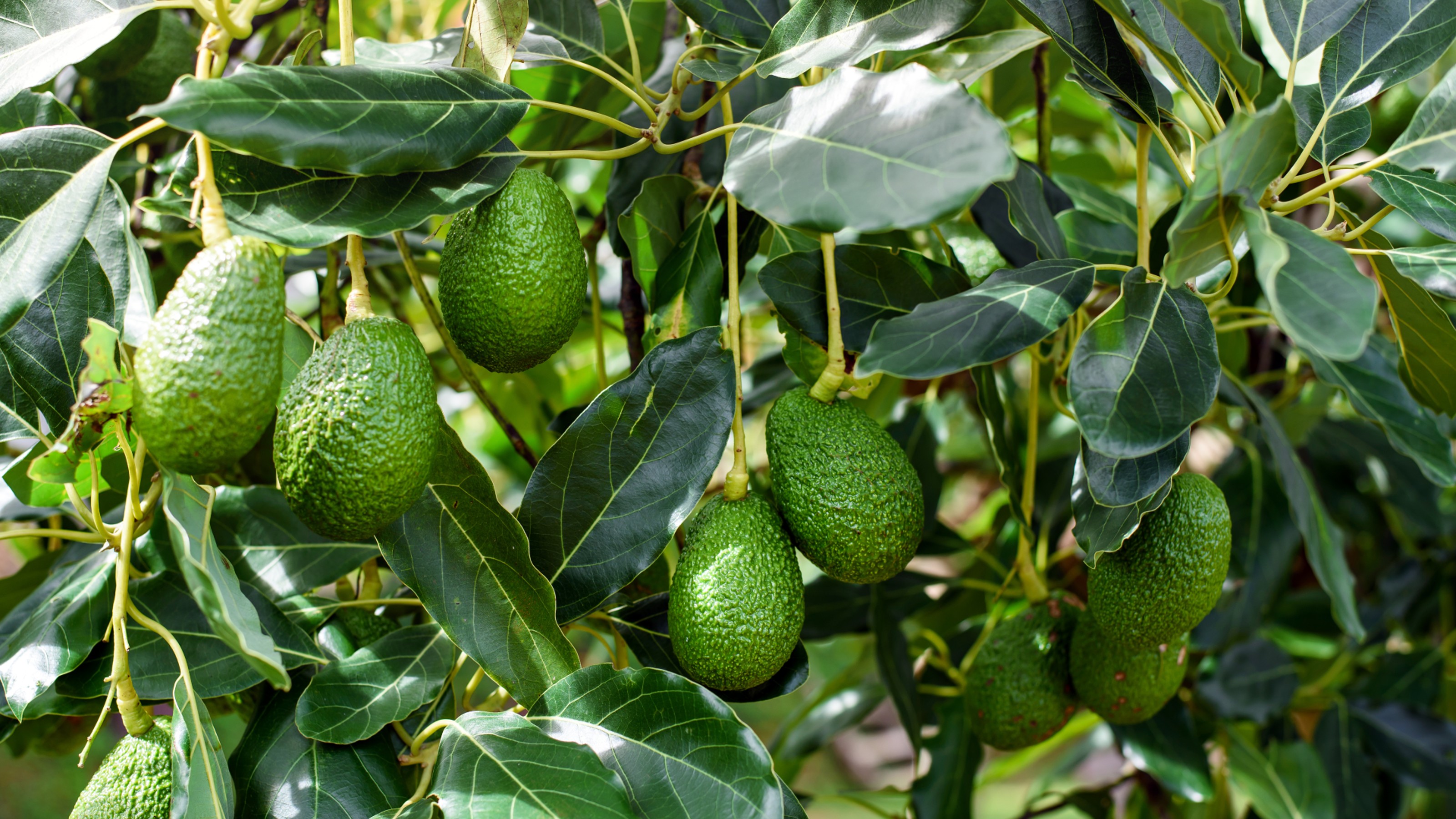

Knowing how to grow avocado from stone is a lengthy process, however, it's one that's extremely rewarding and just downright enjoyable nonetheless. Even if you don't have success the first time around, it's still great fun to try so you can broaden your knowledge on growing your own fruits and vegetables at home.
It's safe to say that avocado has easily crept up as one of the most popular and dare I say it, 'Instagrammable' additions to any meal – whether it's brunch, guacamole, or those delicious-looking smoothie bowls. So what better conversation starter than to be able to say you're on the journey of learning to grow avocado from stone to add to your garden ideas?

How to grow avocado from stone
Learning how to grow avocado from stone is sure to be a great addition to any garden, whether big or small, especially if you're one of the lucky ones whose avocado stone blossoms into a full-fledged fruit tree. While it may not be as easy as growing a lemon tree from seed, it's still great fun to try nonetheless.
'Growing an avocado from a stone can be a very rewarding and enjoyable experience. The key to it is getting the avocado pit to root and sprout. However, if you're undertaking this task, it's important to note that it likely won't bear fruit and will stay just a beautiful plant to decorate your home with,' says Peter Ivanov, gardening and plant expert at Fantastic Gardeners.

Peter Ivanov is a gardening and plant expert who has been working at Fantastic Gardeners for 8 years. As one of the company's top-performing experts, he now manages over 6 teams of gardeners, delivering stunning landscape results and fostering a deep connection with nature through his work.
What you'll need
- A ripe avocado fruit
- Knife
- Toothpicks or wooden skewers
- A glass or jar
- Measuring stick
- Potting soil - like Westland's John Innes No.2 Peat-free Compost on Amazon
- A large enough pot or container
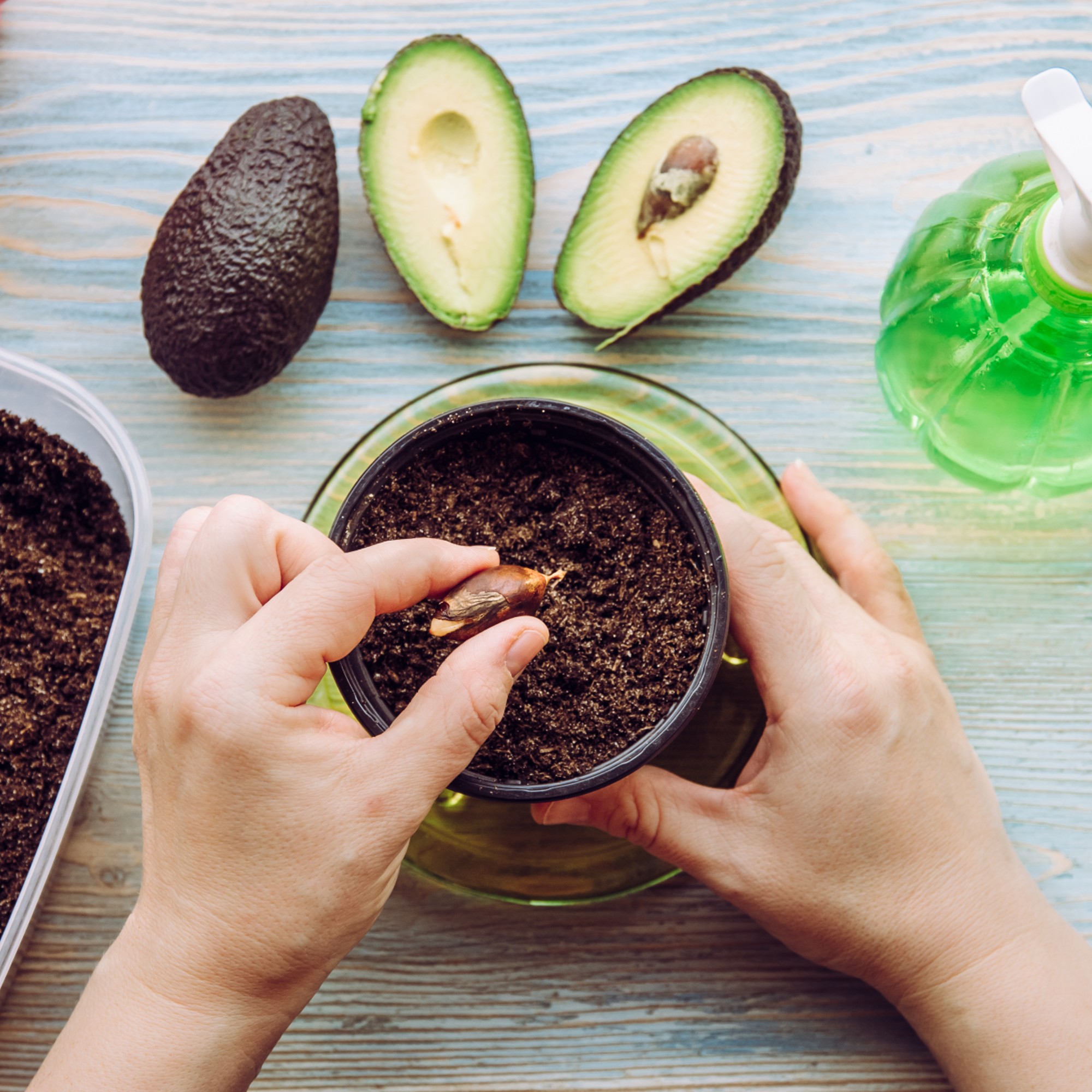
Step-by-step guide
'Growing fruit this way is a matter of whether the seed is viable. Similar to mangoes, avocados are fruits with large seeds that need a very warm climate and before you see results with a harvest that you can actually eat, you'll have to wait many years. Especially if they're grown outside without protection or a greenhouse conservatory, they won't thrive and produce fruit,' explains Peter.
Nevertheless, if you still want to grow avocado from stone as a houseplant to add to your living room houseplant ideas, here's the best method to follow.
1. Select a ripe avocado
'Choose a healthy, ripe avocado fruit from a supermarket or a farmers' market. Look for a fruit that’s neither under-ripe nor overripe, because this will affect the success of germination,' says Peter.
Sign up to our newsletter for style inspiration, real homes, project and garden advice and shopping know-how
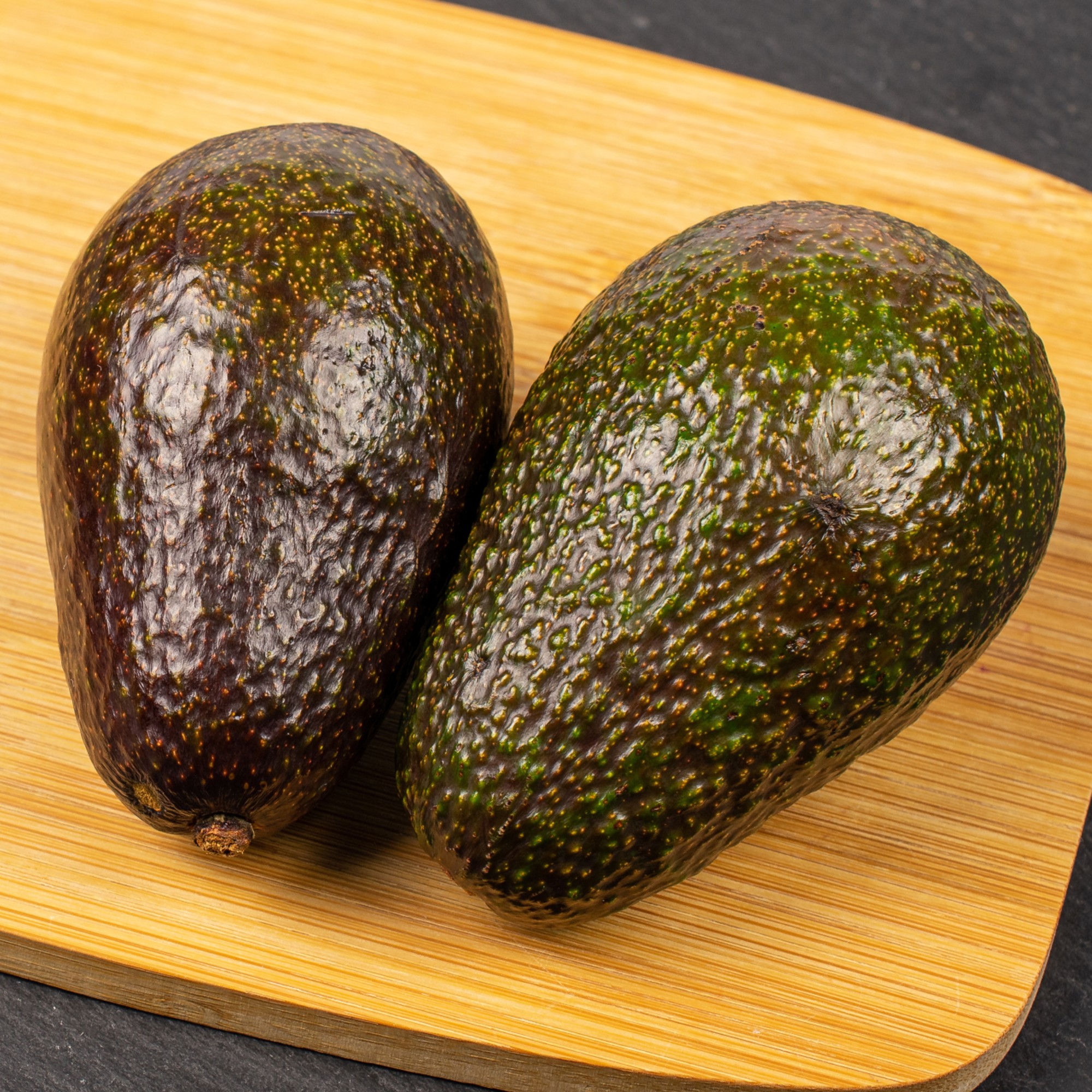
2. Remove the stone
'Carefully cut open the avocado and remove the stone, also known as the seed, from the centre of the fruit,' says Peter.
'You'll need an avocado stone that has not been damaged – so be careful not to slice into it with a knife when removing it from the fruit. Once you have got your stone, wash it to remove any residue and leave it to dry,' adds Daniel Carruthers, director of sales and grow-your-own expert at Cultivar Greenhouses.

Daniel Carruthers is a passionate gardener and grow-your-own guru whose love of gardening began over a decade ago when he left his career as a London chef to move to begin a new venture in the greenhouse industry. Fast forward to present day, and Daniel now enjoys many hours in his greenhouse nurturing a wide range of fruit, veg and herbs, from crop to the kitchen.

3. Prepare the stone for germination
'Next, take three toothpicks and insert them around the circumference, as this will give you a way of suspending it to allow roots to develop,' says Daniel.
Peter adds, 'Make sure they're evenly spaced around the middle. This will help suspend the stone in water.'

4. Suspend the stone in water
'Place the suspended stone in a glass or jar filled with water with the pointed end facing up, while the broader end is submerged in water. Make sure that about 2.5 to 5 centimetres of it is immersed in water and that the jar or glass is large enough to fit the stone,' says Peter.
In other words, make sure the stone is just touching the surface of the water below.

5. Find the right location
'Place the glass or jar in a warm spot that receives indirect sunlight. Avocado trees require warm temperatures and plenty of light, but direct sunlight can be too intense for young plants,' says Peter.
Daniel advises placing the glass or jar on a sunny windowsill, for example.

6. Monitor and change the water
'After you've set up your pit for germination, check the water level regularly and maintain it, making sure the bottom part of the stone remains submerged at all times. Change the water every few days to prevent mould or bacteria growth,' warns Peter.

7. Wait for germination
'After around six weeks, roots should start to sprout from the bottom of the stone, and soon after a stem should begin to grow from the top,' says Daniel. However, he explains that 'if it gets to around eight or nine weeks and it still hasn't shown any signs of growth, it might be best to start afresh with a new stone.'
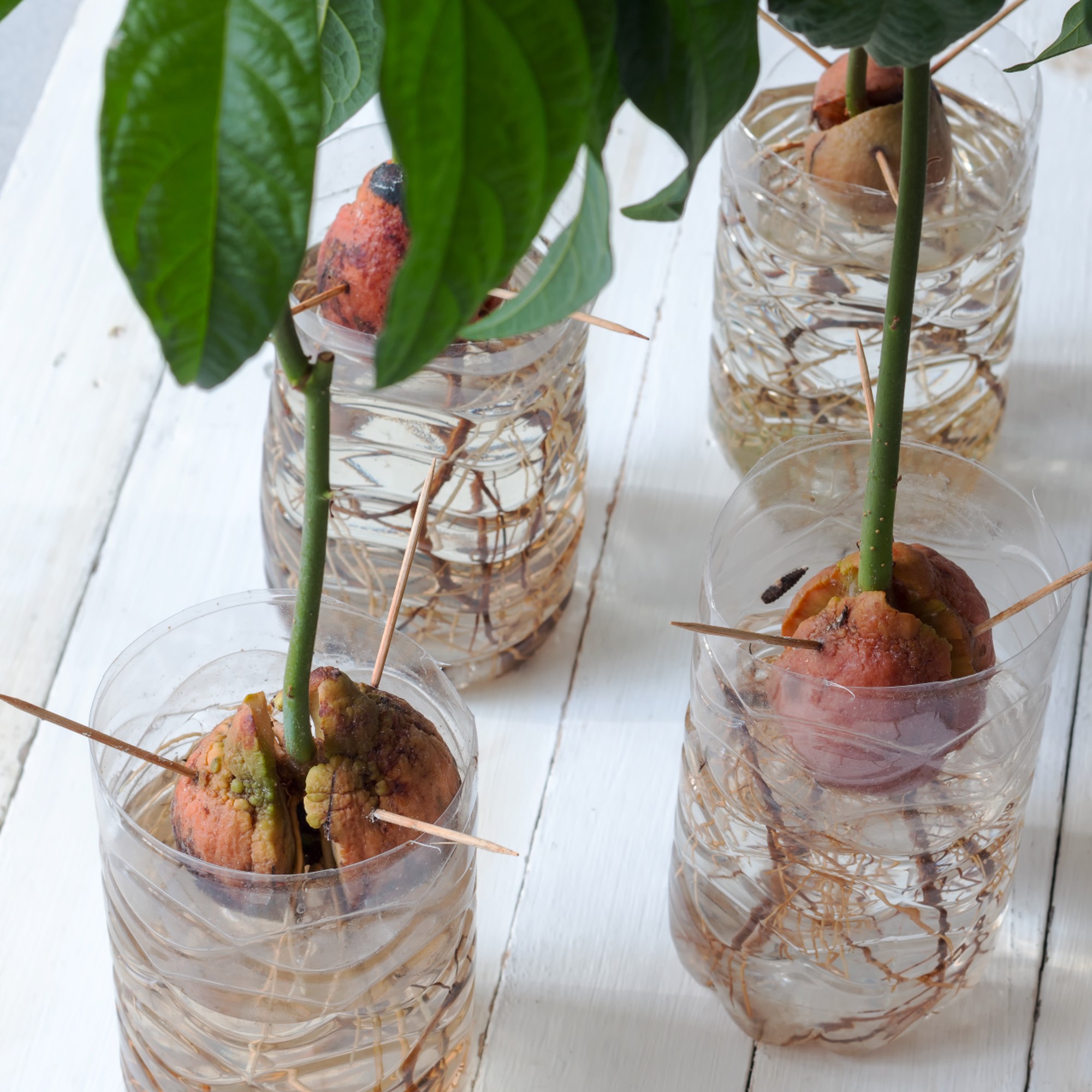
8. Wait for root and stem to grow, then transfer to a pot
'Over time, a stem will also develop. It's very important to wait until the main root is about 15 centimetres long before transferring the pit to soil,' says Peter.
'Once it has developed a thick root system, it is ready to be potted on. Take a pot filled with peat-free compost, insert the stone and root system, and cover it with more compost so that the stem is above the soil. Water well, but be careful not to overwater – it should be kept moist, but not wet!' says Daniel.

9. Maintain optimal conditions
'Avocado trees thrive in warm climates, ideally with a temperature around 15 to 29°C. Provide your plant with adequate sunlight, either by placing the pot near a south-facing sunny window or using artificial grow lights. Besides that, make sure to rotate it periodically to facilitate even growth,' advises Peter.
'During the growing season, you can feed it with liquid plant food every 2 weeks. Make sure to also protect it from pests by frequently inspecting it for typical insects, such as red spider mites, mealybugs, whiteflies or thrips and treat them accordingly if you notice any.'
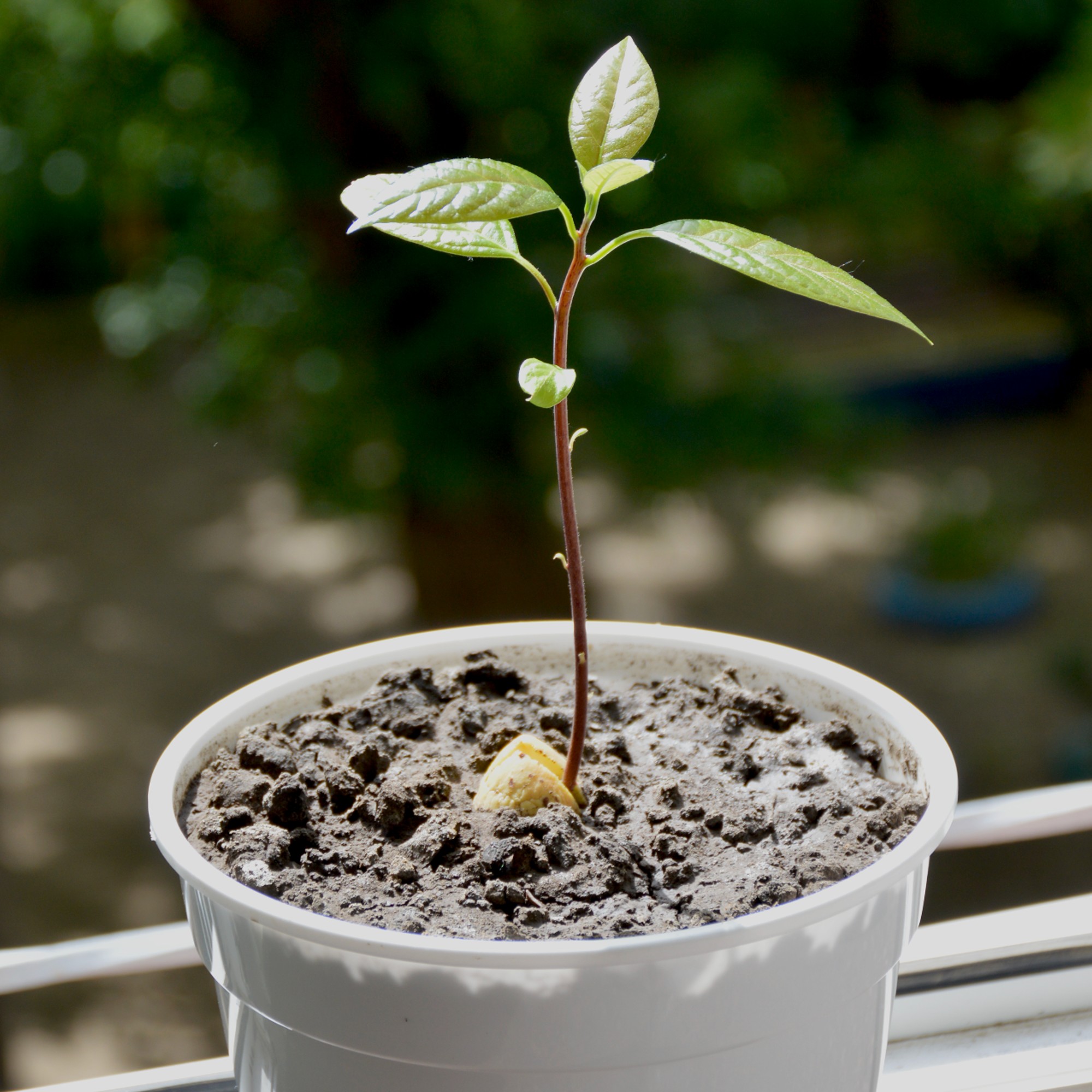
FAQs
How long do avocados take to grow?
Daniel Carruthers at Cultivar Greenhouses says, 'Remember that avocado trees can take several years to bear fruit – sometimes three to five years – but it will be worth it when you’re tucking into a homegrown avocado with your brunch!'
How much water does it take to grow an avocado?
The key part in growing avocado from stone is to regularly check the water level and maintain it, making sure the bottom part of the stone remans submerged at all times. Therefore, there's no exact amount of water it takes as it's all dependent on your specific plant and its conditions.

Jullia was Ideal Home’s Junior Writer from 2022-2024 and the Ideal Home Certified Expert in Training on Vacuums having spent over 60 hours testing different models. She’s always loved all things homes and interiors, graduating with a bachelor’s degree in Architectural Studies from the University of Nottingham where her love for writing blossomed following her internship at ArchDaily. Now focused on home tech and cleaning, Jullia works on writing features and explainers to help people make the most of their home appliance investments, putting the newest launches through their paces. When she isn’t writing, she loves exploring the city, coffee shop hopping, and losing hours to a cosy game or book.